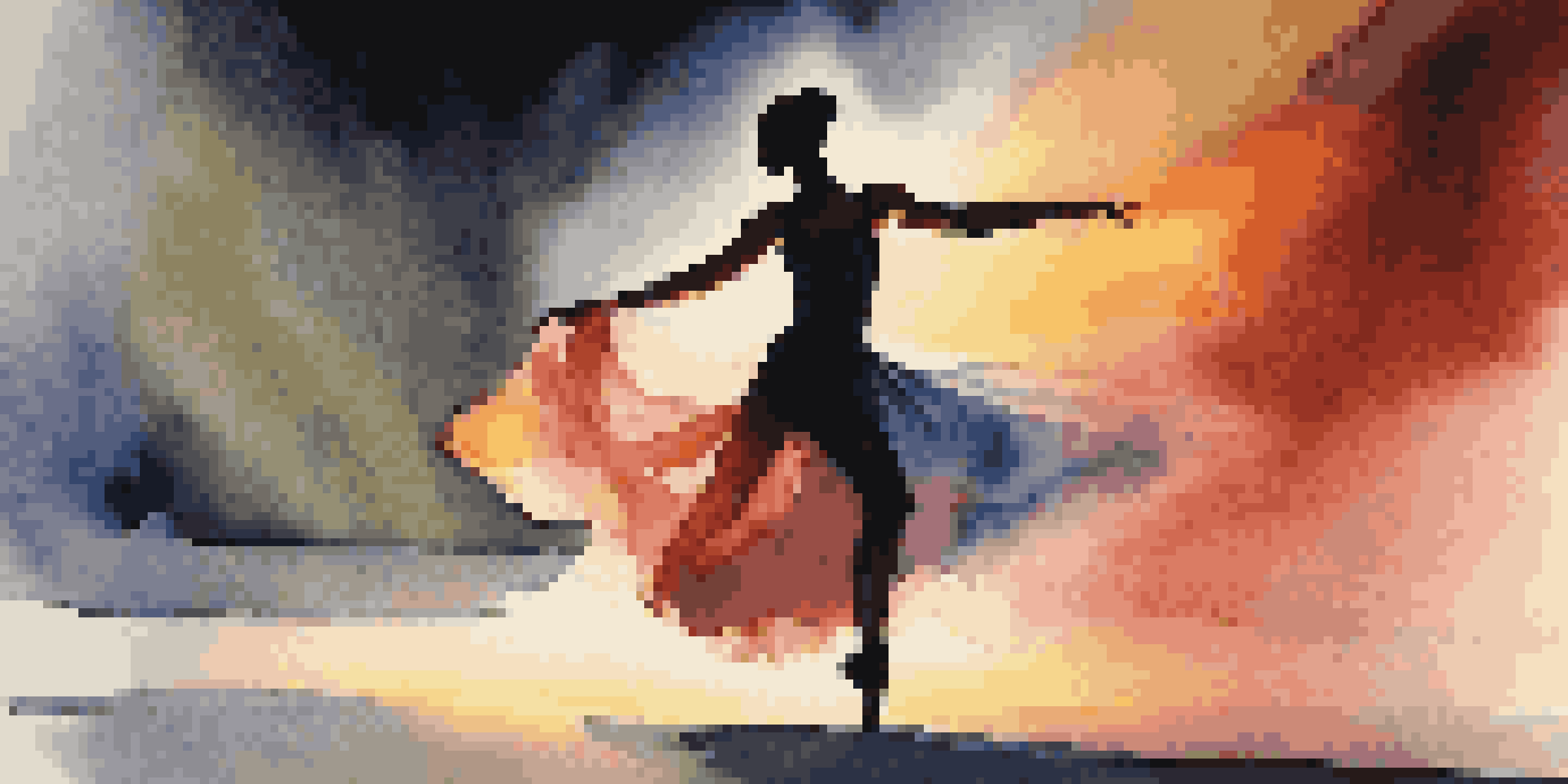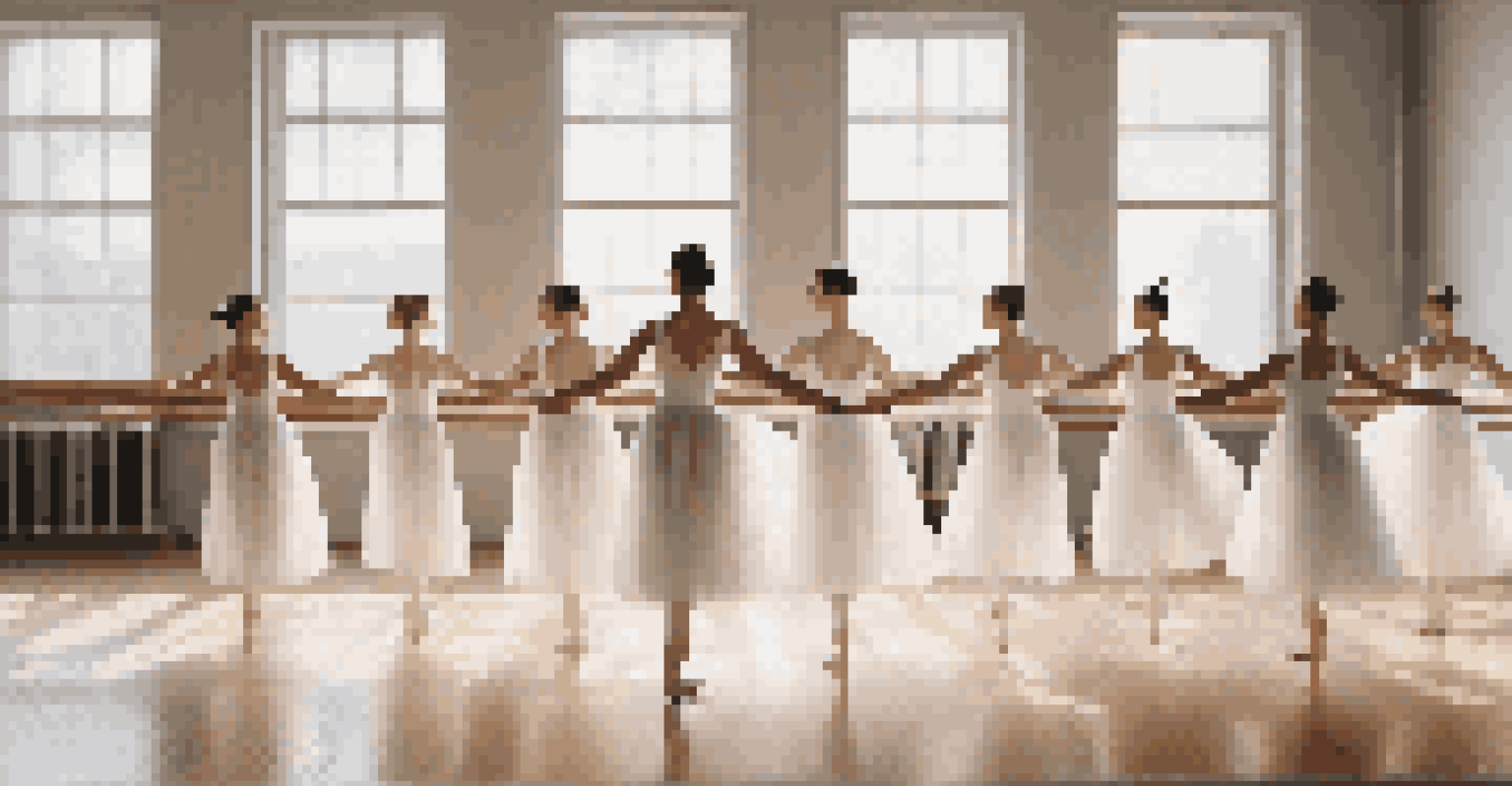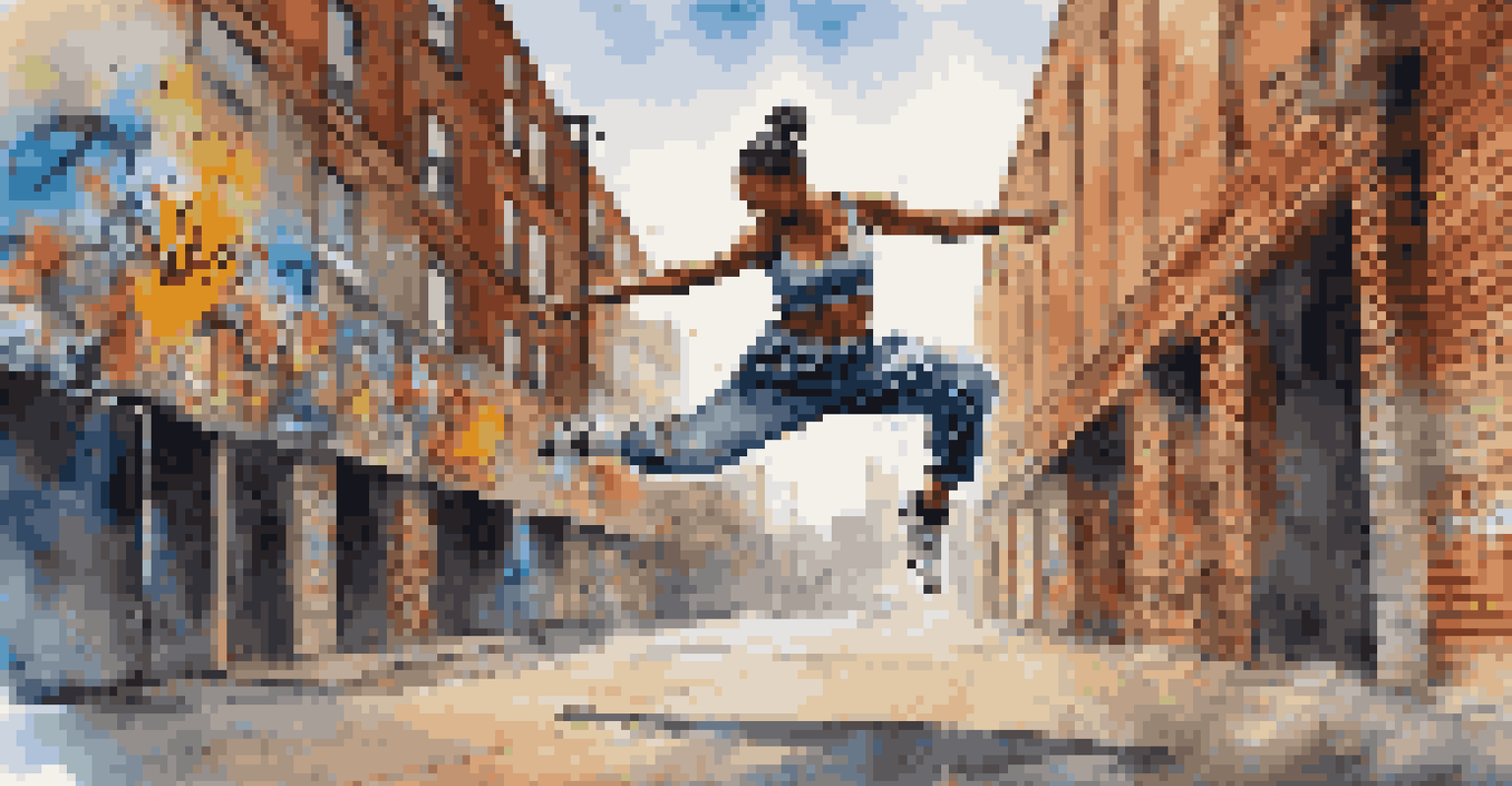Dance as a Visual Art: A Study of Movement and Form

Understanding Dance as a Form of Visual Art
Dance, often seen solely as performance, is fundamentally a visual art form. It captures the essence of human expression through movement, much like a painting conveys emotion through color and shape. Each dance style, from ballet to contemporary, utilizes the body to create a canvas of motion that tells a story.
Dance is the hidden language of the soul.
In this context, dancers become living sculptures, their bodies transforming space and time with each gesture. This visual aspect allows audiences to interpret the narrative being expressed, engaging both the eyes and the heart. By appreciating dance as a visual art, we can deepen our understanding of its significance in culture.
Moreover, just as visual artists manipulate materials to evoke feelings, dancers use their bodies to convey emotions. The fluidity of movement, the sharpness of a pose, and the interplay of light and shadow all contribute to the visual impact of dance, making it a captivating art form.
The Role of Movement in Creating Artistic Expression
Movement is at the core of dance, serving as the primary medium through which expression is conveyed. Each step, turn, and leap contributes to a larger narrative, much like brushstrokes on a canvas create an image. This dynamic nature of movement allows for an infinite variety of expressions, making dance a unique art form.

For instance, the sharp, quick movements in hip-hop contrast starkly with the soft, flowing motions of modern dance. These differences not only distinguish the styles but also shape the emotions they evoke in the audience. Just as artists choose their medium carefully, dancers select their movements to tell their stories effectively.
Dance as Visual Storytelling
Dance utilizes movement to convey emotions and narratives, making it a powerful form of visual art.
Additionally, movement in dance can symbolize broader themes, such as freedom, constraint, or joy. This ability to convey complex ideas through physicality makes dance a powerful tool for artistic expression and a compelling visual art form.
Exploring the Aesthetics of Dance: Shape and Form
The aesthetics of dance are deeply rooted in the shapes and forms created by the dancer's body. Each pose is a moment frozen in time, creating a visual spectacle that can be appreciated from multiple angles. Much like an artist considers the composition of their work, dancers must be aware of how their bodies interact with space.
The dance is a poem of which each movement is a word.
This interplay between the dancer and the surrounding environment is vital to the visual impact of a performance. For example, a dancer’s silhouette against a backdrop can evoke different feelings than when they are illuminated on a brightly lit stage. These considerations highlight the importance of form in creating a visually stunning performance.
Moreover, the use of costume and props adds another layer of dimension to dance, enhancing its visual appeal. When combined with movement, these elements can transform a simple dance into an extraordinary visual experience that captivates audiences.
The Importance of Space in Dance as Visual Art
Space plays a crucial role in dance, influencing how movement is perceived by the audience. Dancers utilize the area around them to create patterns and formations, much like a painter uses negative space to enhance their artwork. The way dancers navigate their environment can significantly alter the visual narrative being presented.
For instance, a solo dancer may emphasize their isolation through the use of space, while a group may create a sense of unity through synchronized movements. This manipulation of space invites viewers to engage with the performance on a deeper level, enhancing the overall aesthetic experience.
Interplay of Space in Dance
The use of space in dance enhances the visual impact of performances, allowing for deeper audience engagement.
Additionally, choreographers often design dance pieces with specific spatial concepts in mind, further solidifying dance's status as a visual art. By thoughtfully considering how movement interacts with space, choreographers can create powerful visual statements that resonate with audiences.
The Connection Between Dance and Other Visual Arts
Dance doesn't exist in a vacuum; it often intersects with other visual art forms such as theater, film, and even painting. This interconnectedness enriches the artistic experience, allowing for a blend of different mediums. For example, a dance performance may incorporate elements of set design, lighting, and even visual projections to create a multifaceted piece.
Moreover, collaborations between dancers and visual artists can yield innovative results, pushing the boundaries of both art forms. Consider a choreographed dance that is performed in front of a live painting, where the visual and kinetic elements enhance each other. This synergy illustrates the potential for dance to coexist harmoniously with other visual arts.
As a result, understanding dance as a visual art opens avenues for creative exploration, encouraging artists to draw inspiration from one another. This collaboration fosters a richer artistic dialogue and showcases the versatility of dance within the broader spectrum of visual arts.
The Impact of Technology on Dance as a Visual Art
In today’s digital age, technology significantly influences how dance is created and experienced. From innovative lighting designs to digital projections, technology enhances the visual components of dance, making performances more immersive. For instance, a dance piece might incorporate augmented reality, allowing audiences to experience movement in entirely new ways.
Moreover, technology has expanded the reach of dance, enabling performances to be shared globally through platforms like social media and streaming services. This accessibility allows for a wider audience to appreciate dance as a visual art, breaking down geographical barriers. As a result, dancers can showcase their artistry to diverse audiences, enhancing their visibility.
Technology's Role in Dance Art
Technology enriches dance by creating immersive experiences and expanding its global reach through digital platforms.
Additionally, choreographers are now experimenting with virtual reality and motion capture, creating new forms of dance that merge physicality with digital artistry. This evolving landscape illustrates how technology not only supports dance but also transforms it into a visually captivating experience.
Conclusion: Celebrating Dance as a Unique Visual Art Form
In conclusion, dance is much more than a series of movements; it is a vibrant visual art form that communicates emotions and tells stories. By recognizing the visual aspects of dance—movement, shape, space, and technology—we can appreciate it as a multifaceted artistic expression. Each performance is a unique exploration of creativity, inviting audiences to engage with the art form on various levels.
As we celebrate dance, it's essential to understand its connections with other visual arts and the impact of technology on its evolution. The interplay between these elements not only enhances our appreciation of dance but also encourages artistic innovation.

Ultimately, by embracing dance as a visual art, we can foster a deeper understanding of its role in culture and its ability to connect people through shared experiences. Dance, with its rich history and dynamic future, will continue to inspire and move us in ways we have yet to imagine.